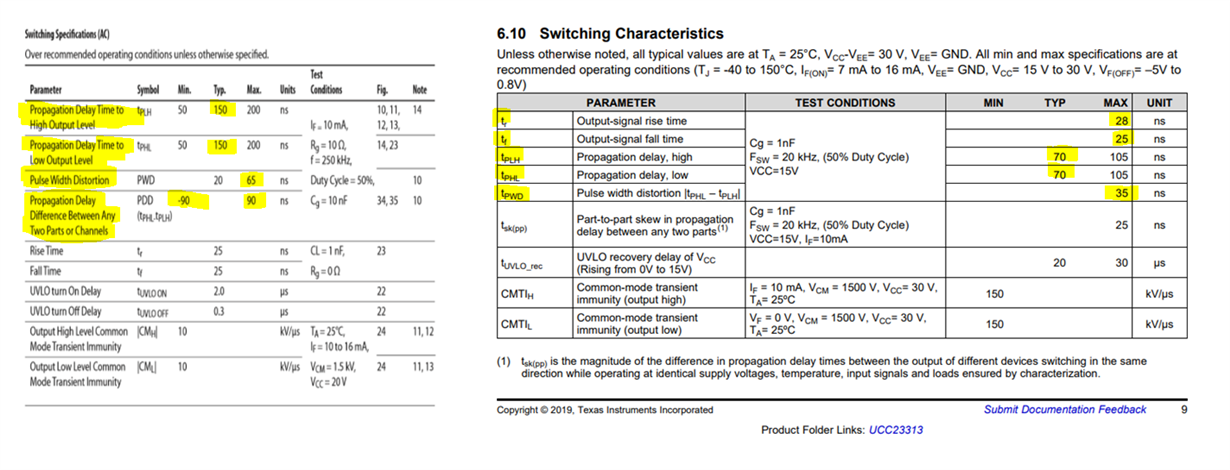Other Parts Discussed in Thread: UCC28950, UCC5350, UCC21520, UCC21225A, TIDA-00446
Hi team ,
I'm looking at UCC23313 gate driver part and another manufacturers parts for drive the mosfet.
How can I understand what the frequency range of the optocoupler is?
For example what does
- propagation delay
- part-to-part delay matching
- pulse width distortion
terms mean?
And there is a figure below of the HCPL3180 gate drivers IC ,
So can this IC & the UCC23313 work in 150kHz %90 duty cylce?
Best Regards




